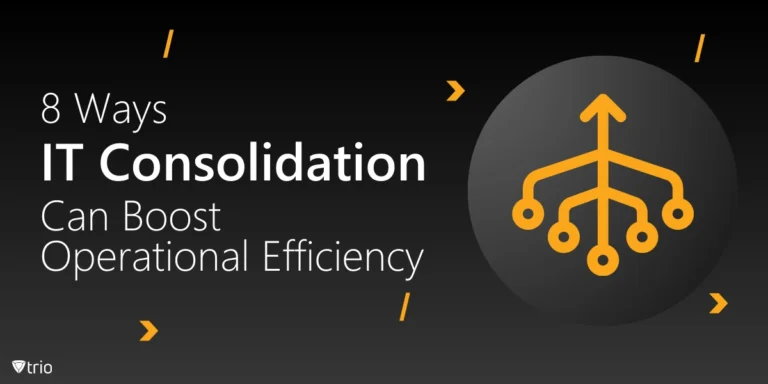Today, where businesses heavily rely on information technology (IT) resources, safeguarding these assets from misuse and potential threats is paramount. An Acceptable Use Policy (AUP) is a crucial tool for organizations to establish guidelines and expectations for appropriately utilizing their IT infrastructure, encompassing networks, devices, and software. By implementing a well-crafted AUP, companies can mitigate risks, protect sensitive data, and foster a secure and productive digital environment for their employees and stakeholders. In our comprehensive guide, we’ll walk you through crafting an effective AUP policy and offer you an Acceptable Use Policy template that you can download and customize to your needs.
Demystifying the Acceptable Use Policy
An Acceptable Use Policy, often referred to as an AUP, is a comprehensive document that outlines the rules and regulations governing the acceptable and prohibited behaviors associated with an organization’s IT resources. It acts as a legally binding agreement between the company and its users, defining the boundaries of permissible activities and the consequences of violating the established guidelines.
The primary objective of an AUP is to protect the confidentiality, integrity, and availability of an organization’s information assets. By clearly delineating acceptable practices, an AUP helps to minimize potential security breaches, data leaks, and legal liabilities that could arise from the misuse of IT resources.
Importance of an Acceptable Use Policy Template
Developing an Acceptable Use Policy for businesses from scratch can be daunting, particularly for organizations with limited resources or expertise in information security. This is where an Acceptable Use Policy template becomes invaluable. A well-designed template serves as a foundation, providing a structured framework that organizations can tailor to their specific needs and requirements.
By leveraging an AUP template, businesses can save time and effort while ensuring their policy encompasses essential elements and best practices. Additionally, a template can help maintain consistency and clarity throughout the document, reducing the risk of ambiguity or omissions that could compromise the policy’s effectiveness.
Comprehensive and Customizable Acceptable Use Policy Template for Free Download
We have developed a comprehensive and customizable Acceptable Use Policy (AUP) template for IT administrators. This template encompasses a broad spectrum of guidelines and protocols to ensure the appropriate use of an organization’s network and internet resources. It is a foundational document delineating acceptable and unacceptable behaviors, thus safeguarding the organization’s digital environment from misuse and potential legal ramifications. The AUP template is meticulously structured to cover all critical aspects, providing a robust framework that IT administrators can rely on to maintain and enforce digital security standards.
The free AUP template is adaptable, allowing IT administrators to tailor it to their organization’s unique policies, culture, and compliance requirements. With this flexibility, the template ensures that all pertinent areas are addressed, thereby fostering a secure and compliant digital environment. Using our AUP template, you can establish clear expectations for user behavior, enhancing overall cybersecurity posture and operational efficiency. You’re welcome to download and use our free Acceptable Use Policy template below.
What Is in an Acceptable Use Policy?
An effective Acceptable Use Policy should encompass a broad range of topics and considerations to ensure a comprehensive approach to IT resource management and security. Here are the key sections that should be included in a robust AUP template:
Purpose and Scope
This section defines the purpose of the Acceptable Use Policy and outlines its scope, specifying the individuals, entities, and IT resources to which the policy applies. It sets the foundation for the document and provides context for the subsequent sections.
Acceptable Use Guidelines
This section outlines the permissible activities and behaviors when utilizing the organization’s IT resources. It may include guidelines for appropriate use of email, internet access, software installations, and data handling practices. Clear examples and scenarios can help users better understand the expectations outlined in this section.
Prohibited Activities
In contrast to the previous section, this part explicitly states the activities and behaviors strictly forbidden within the organization’s IT environment. It may include unauthorized access attempts, illegal or offensive content distribution, and activities that could compromise system security or performance.
Access Management and Authentication
This section addresses the policies and procedures related to user authentication, password management, and access control mechanisms. It aims to ensure that only authorized individuals can access the organization’s IT resources and that appropriate measures are in place to protect sensitive information.
Data Security and Confidentiality
Safeguarding sensitive data is a critical concern for any organization. This section outlines the guidelines and best practices for handling, storing, and transmitting confidential information. It may include provisions for encryption, secure communication protocols, and data classification practices based on your company’s geographical location and scope of service.
Email and Communication Guidelines
With email and other communication channels being integral to modern business operations, this section establishes rules and expectations for their appropriate use. It may cover topics like email etiquette, content filtering, and guidelines for sharing sensitive information through electronic communication channels.
Mobile Device and Bring Your Own Device (BYOD) Policies
As the use of mobile devices and personal devices in the workplace becomes increasingly prevalent, this section addresses the policies and procedures related to BYOD secure integration and management within the organization’s IT infrastructure.
Monitoring and Incident Reporting
This section outlines the organization’s approach to monitoring IT resource usage and the procedures for reporting potential security incidents or policy violations. It aims to promote transparency and encourage users to report suspicious activities or breaches promptly.
Consequences and Enforcement
To ensure the effectiveness of the Acceptable Use Policy, this section clearly defines the consequences and disciplinary actions that may be taken in the event of policy violations. It reinforces the importance of adhering to the established guidelines and helps maintain accountability among users.
Review and Update Procedures
Technology and security threats are ever-evolving, necessitating regular reviews and updates to the Acceptable Use Policy. This section outlines the procedures and timelines for periodically reviewing and updating the policy to ensure its continued relevance and effectiveness.
Legal and Regulatory Compliance
Depending on the industry and geographic location of the organization, there may be specific legal and regulatory requirements related to data protection, privacy, and IT resource management. This section addresses these compliance obligations and ensures that the AUP aligns with applicable laws and regulations.
User Acknowledgment and Consent
To establish a legally binding agreement, it is essential to obtain user acknowledgment and consent to the Acceptable Use Policy. This section outlines the procedures for obtaining user consent, which may involve electronic signatures, clickwrap agreements, or other methods of acknowledgment.
Strategies for Effective Implementation and Enforcement
Developing a comprehensive Acceptable Use Policy is only the first step; effective implementation and enforcement are equally crucial. Here are some strategies to consider:
Communicate and Train
Ensuring that all users are aware of the Acceptable Use Policy and understand its implications is paramount. Regular communication and training sessions can help reinforce the importance of adhering to the policy and promote a culture of security awareness within the organization.
Leverage Technology Solutions
Implementing technology solutions, such as Mobile Device Management (MDM) platforms, can significantly aid in enforcing the Acceptable Use Policy. MDM solutions like Trio offer features like remote device management, application control, and data loss prevention, enabling organizations to monitor and enforce policy compliance across their IT infrastructure. You’re welcome to try Trio’s free demo today to discover its capabilities.
Establish Reporting and Incident Response Procedures
Clearly defined procedures for reporting policy violations and addressing security incidents are essential for effective enforcement. Establishing dedicated channels for reporting, along with a well-structured incident response plan, can help organizations promptly address and mitigate potential threats or policy breaches.
Regular Policy Reviews and Updates
As technology and security landscapes evolve, it is crucial to periodically review and update the Acceptable Use Policy to ensure its continued relevance and effectiveness. Establishing a regular review cycle and incorporating feedback from users and stakeholders can help identify areas for improvement and ensure the policy remains aligned with industry best practices.
Lead by Example
Fostering a culture of compliance and security awareness starts from the top. Leadership and management should lead by example, actively promoting adherence to the Acceptable Use Policy and demonstrating a commitment to protecting the organization’s IT resources and sensitive data.
Conclusion: Crafting the Most Effective AUP Policy
An Acceptable Use Policy serves as a critical safeguard for organizations, protecting their IT resources, sensitive data, and overall security posture. By leveraging a comprehensive Acceptable Use Policy template, businesses can streamline policy development while ensuring that essential elements and best practices are incorporated.
See Trio in Action: Get Your Free Trial Now!
Remember, an effective Acceptable Use Policy is not just a document but a living guideline requiring ongoing communication, training, and enforcement. By implementing strategies such as leveraging technology solutions like Trio, establishing incident response procedures, and fostering a culture of security awareness, your organization can maximize the impact and effectiveness of its Acceptable Use Policy.
Ultimately, a well-crafted and properly implemented Acceptable Use Policy can empower organizations to navigate the complexities of the digital world with confidence, mitigating risks and ensuring a secure and productive IT environment for all stakeholders.




